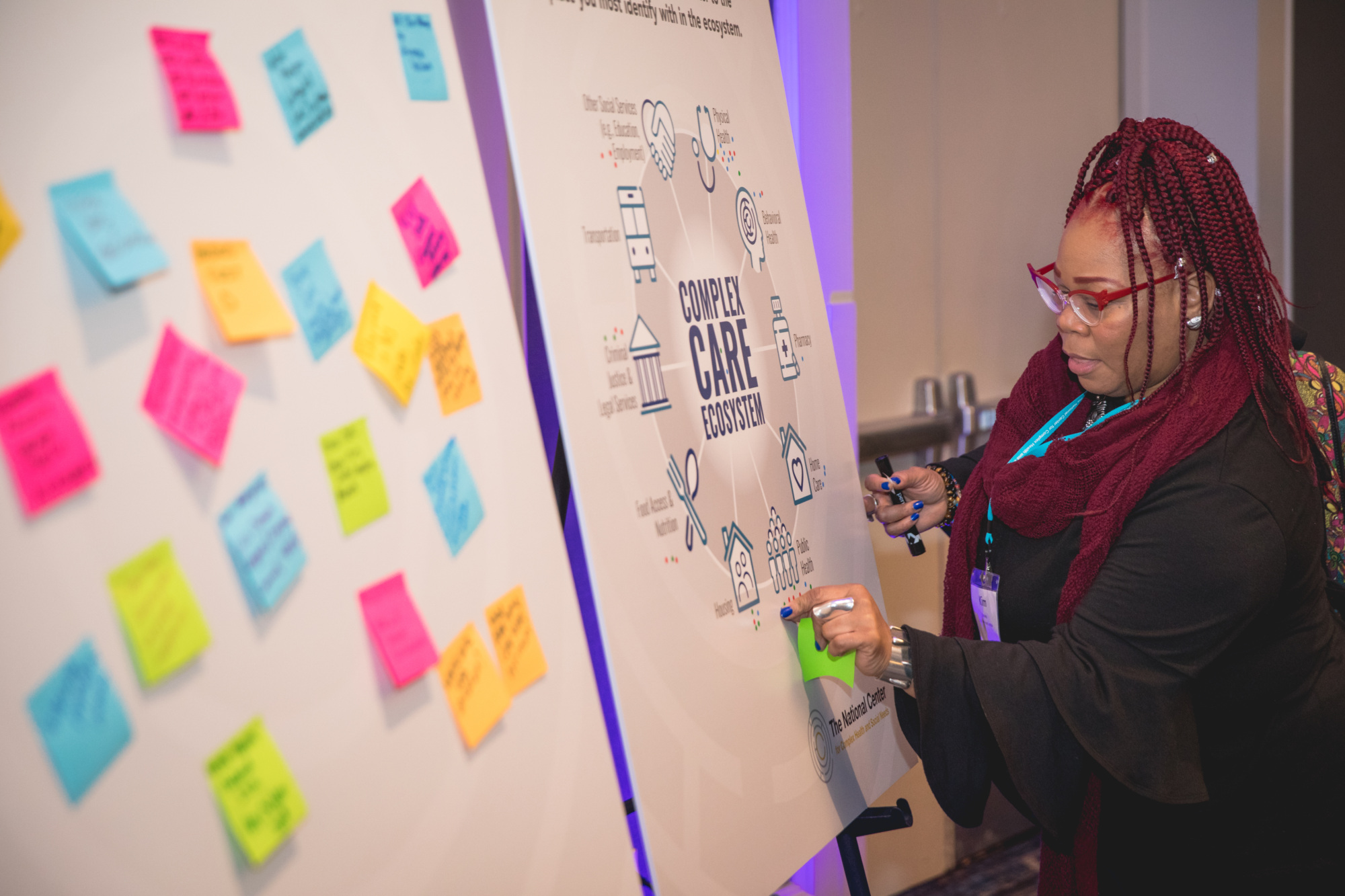How do we measure strong and equitable ecosystems of care?
Building the complex care field Strengthening ecosystems of care Education & training Measurement & evaluation Quality improvement SDOH & health equity
How strong is your community’s ecosystem of care?
Building the complex care field Strengthening ecosystems of care Measurement & evaluation Quality improvement SDOH & health equity

The Camden Coalition developed the Ecosystem Assessment Tool as a continuous quality improvement framework to answer those questions. The tool is designed to help partners within an ecosystem of care:
Building and strengthening a coordinated ecosystem of care is a powerful way to advance health equity. No single organization or sector can solve complex, deeply rooted health inequities alone, but by bringing partners together we can address inequities at the community level. And in order to track our collective, community-level impact, we need a way to define and measure it.
We started by defining six domains of a strong ecosystem of care. Expand each domain for more information.
A well-prepared, diverse, interprofessional workforce that is supported to deliverhigh quality, person-centered care. The workforce should include people from the community served.
Workforce members should be trained to think creatively and to collaborate effectively with program participants and partners.
Ecosystem partners continuously evaluate the continuum of services that are needed by the community served to ensure that services are accessible and effective.
Ecosystem partners ensure service gaps are filled and that care management supports individuals to achieve their identified goals in a timely manner.
Organizations generate, share, and use quantitative and qualitative data to identify and understand the populations they serve, assess needs, coordinate services, adapt best practices, and continuously measure and improve the delivery of care and support.
A well-functioning process and structure for identifying priorities, designing and improving services, and collaborating with all relevant stakeholders, including communities and people with lived experience (PWLE).
Leaders recognize the power differentials among participants and seek to share power.
Resources and payment arrangements are directed to the organizations and services that are essential to improve the health and well-being of the populations served, particularly community-based organizations and those providing non-medical services for health-related social needs.
Community members and people with lived experience are key stakeholders who are meaningfully engaged in shaping all aspects of care delivery, program design, quality improvement, and governance.
We then built those domains out into a framework, with 2-4 attributes under each domain:

To use the tool, score each attribute on a scale from limited practice to advanced practice:

You can apply the scoring rubric to every attribute in the framework for a comprehensive assessment of the current state of your ecosystem of care. Or select target attributes to score before and after the implementation of a program or project to determine its impact.
See below for an example of using the rubric to measure the impact of a project on the “teaming and collaboration” attribute under the workforce domain:

We are in the process of building more materials to help people use the Ecosystem Assessment Tool in their communities. We want to hear from you: what are we missing? What would be helpful for you to put this tool into practice? Please send any feedback to Natasha Dravid at [email protected].
For more information about the Ecosystem Assessment Tool, watch the webinar recording.
Building the complex care field Strengthening ecosystems of care Education & training Measurement & evaluation Quality improvement SDOH & health equity
By Rebecca Koppel, Senior Program Manager for Field Building and Resources
Building the complex care field Strengthening ecosystems of care Quality improvement SDOH & health equity
Care management & redesign Strengthening ecosystems of care Quality improvement
Community & consumer engagement Data analysis & integration Strengthening ecosystems of care
Building the complex care field Strengthening ecosystems of care



